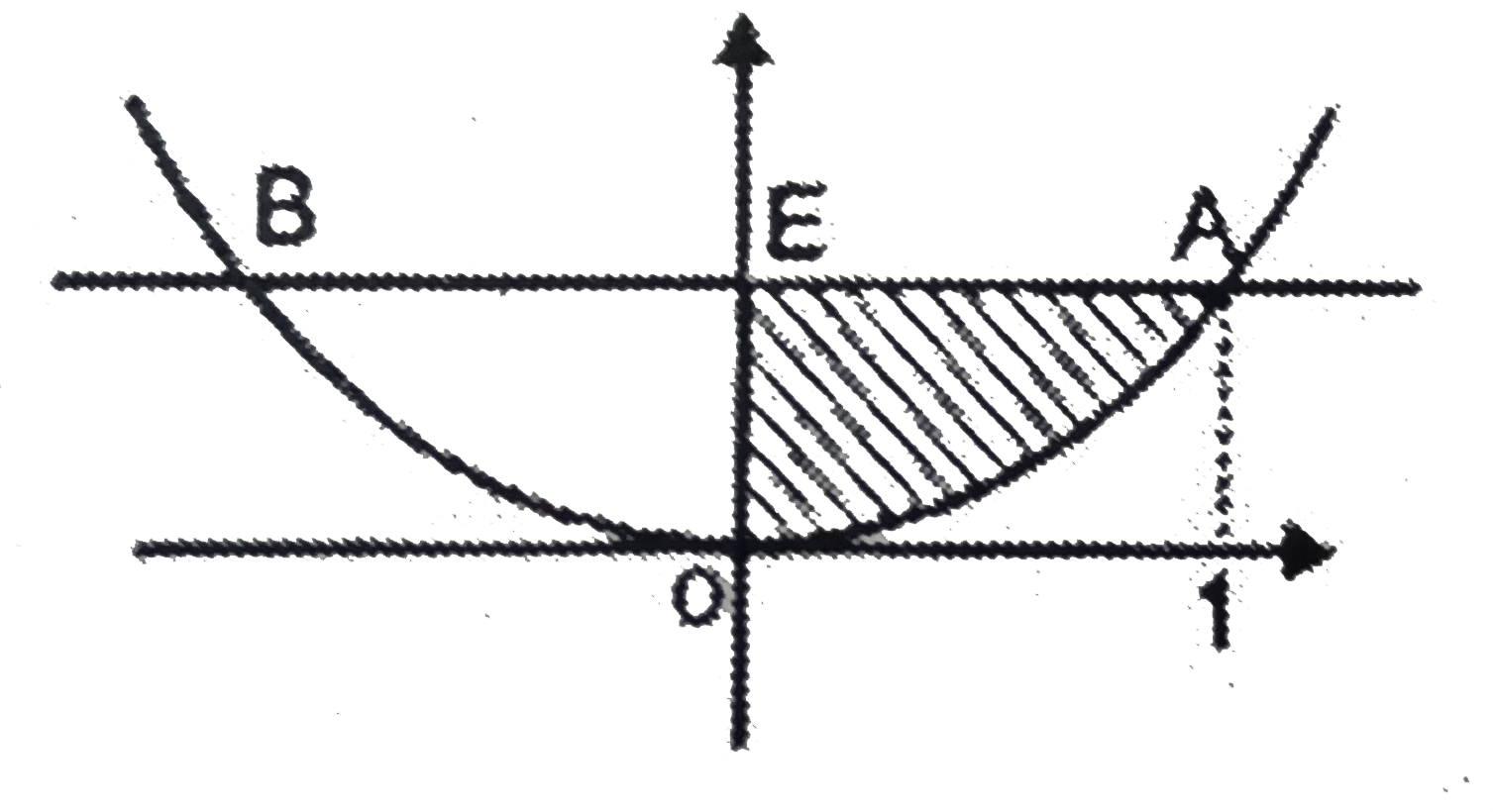The area bounded by the parabola y=x2+x+1, its tangent at P(1, 3), line x=−1 and the x - axis is A sq units. Then, the value of 6A is equal to
a prime number
a composite number
an irrational number
a non - integer
The correct Answer is:A
To solve the problem, we need to find the area bounded by the parabola y=x2+x+1, its tangent at the point P(1,3), the line x=−1, and the x-axis. Then we will calculate 6A, where A is the area we found.
Step 1: Find the equation of the tangent line at point P(1,3)
1. Calculate the derivative of the parabola:
dydx=2x+1
2. Evaluate the derivative at x=1:
dydx∣∣∣x=1=2(1)+1=3
The slope of the tangent line at point P(1,3) is 3.
3. Use the point-slope form of the line:
y−y1=m(x−x1)
Substituting (x1,y1)=(1,3) and m=3:
y−3=3(x−1)⟹y=3x
Step 2: Determine the area bounded by the parabola, tangent line, line x=−1, and the x-axis
1. Find the intersection points:
- The tangent line y=3x intersects the parabola at:
3x=x2+x+1⟹x2−2x+1=0⟹(x−1)2=0⟹x=1
- The parabola intersects the x-axis when y=0:
x2+x+1=0
The discriminant D=12−4⋅1⋅1=−3<0 indicates that it does not intersect the x-axis.
2. Set up the area calculation:
- The area A can be calculated as:
A=∫0−1(x2+x+1)dx+∫10(x2+x+1−3x)dx
Step 3: Calculate the first integral A1
1. Evaluate A1=∫0−1(x2+x+1)dx:
A1=(x33+x22+x)0−1
- At x=0:
0
- At x=−1:
(−1)33+(−1)22+(−1)=−13+12−1=−13+36−66=−13−36=−13−12=−56
- Thus:
A1=0−(−56)=56
Step 4: Calculate the second integral A2
1. Evaluate A2=∫10(x2+x+1−3x)dx=∫10(x2−2x+1)dx:
A2=(x33−x2+x)10
- At x=1:
13−1+1=13
- At x=0:
0
- Thus:
A2=13−0=13
Step 5: Calculate total area A
1. Sum the areas:
A=A1+A2=56+13=56+26=76
Step 6: Calculate 6A
1. Calculate 6A:
6A=6⋅76=7
Final Answer
Thus, the value of 6A is 7.
dydx=2x+1
2. Evaluate the derivative at x=1:
dydx∣∣∣x=1=2(1)+1=3
The slope of the tangent line at point P(1,3) is 3.
y−y1=m(x−x1)
Substituting (x1,y1)=(1,3) and m=3:
y−3=3(x−1)⟹y=3x
- The tangent line y=3x intersects the parabola at:
3x=x2+x+1⟹x2−2x+1=0⟹(x−1)2=0⟹x=1
- The parabola intersects the x-axis when y=0:
x2+x+1=0
The discriminant D=12−4⋅1⋅1=−3<0 indicates that it does not intersect the x-axis.
- The area A can be calculated as:
A=∫0−1(x2+x+1)dx+∫10(x2+x+1−3x)dx
A1=(x33+x22+x)0−1
- At x=0:
0
- At x=−1:
(−1)33+(−1)22+(−1)=−13+12−1=−13+36−66=−13−36=−13−12=−56
- Thus:
A1=0−(−56)=56
A2=(x33−x2+x)10
- At x=1:
13−1+1=13
- At x=0:
0
- Thus:
A2=13−0=13
A=A1+A2=56+13=56+26=76
6A=6⋅76=7
Topper's Solved these Questions
Similar Questions
Knowledge Check
The area (in sq. units) bounded by the parabola y=x2−1, the tangent at the point (2,3) to it and the y-axis is
A143B563C83D323Area bounded by the parabola 3y=x2, the X-axis and the lines x = 2, x = 3 is
A299B179C79D199The area bounded by the parabola 4y=3x2, the line 2y=3x+12 and the y - axis is
A10 sq. unitsB20 sq. unitsC30 sq. unitsD36 sq. units
The area bounded by the curve y=x2+2x+1 and tangent at (1,4) and y -axis is
View SolutionFind the area bounded by the parabola x2=y, x-axis and the line y=1

View SolutionThe area bounded by the parabola y=x2 and the line y=2xis4/3 sq. units.
View SolutionThe area of the region bounded by the curve y=x3, its tangent at (1, 1) and x-axis is
View SolutionIf Δ be the area in square units of the region bounded by the parabola y=−x2−2x+3, the line tangent to it at the point P(2,−5) and the y-axis, then 3Δ is equal to…
View Solution
